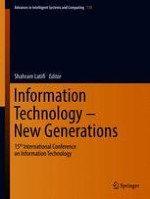2018 | OriginalPaper | Buchkapitel
81. Applying Transfer Learning to QSAR Regression Models
verfasst von : Rodolfo S. Simões, Patrícia R. Oliveira, Káthia M. Honório, Clodoaldo A. M. Lima
Erschienen in: Information Technology - New Generations
Aktivieren Sie unsere intelligente Suche, um passende Fachinhalte oder Patente zu finden.
Wählen Sie Textabschnitte aus um mit Künstlicher Intelligenz passenden Patente zu finden. powered by
Markieren Sie Textabschnitte, um KI-gestützt weitere passende Inhalte zu finden. powered by
